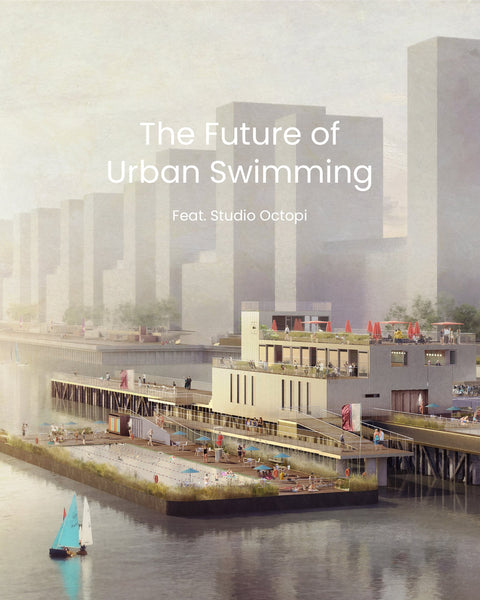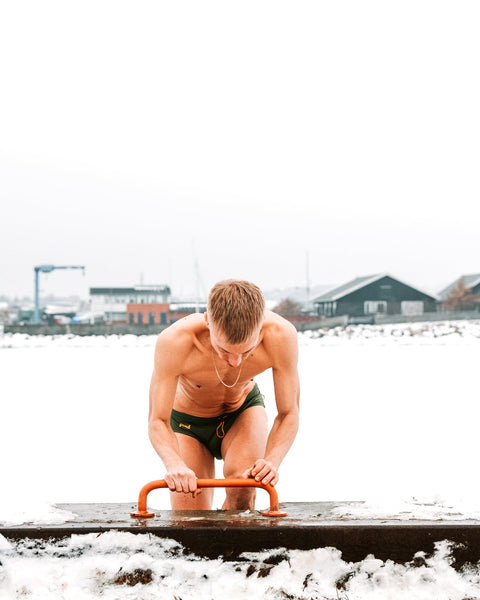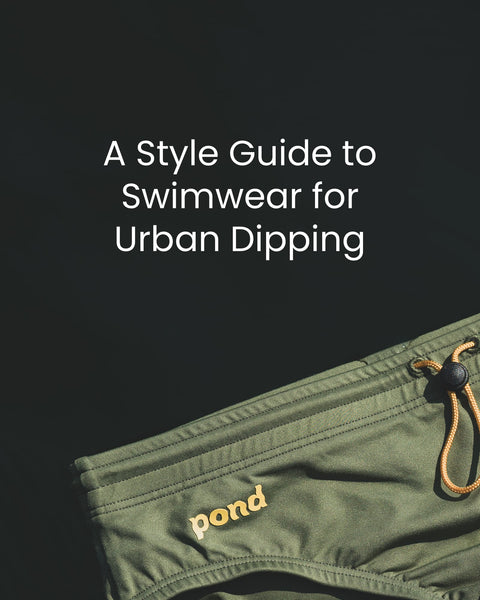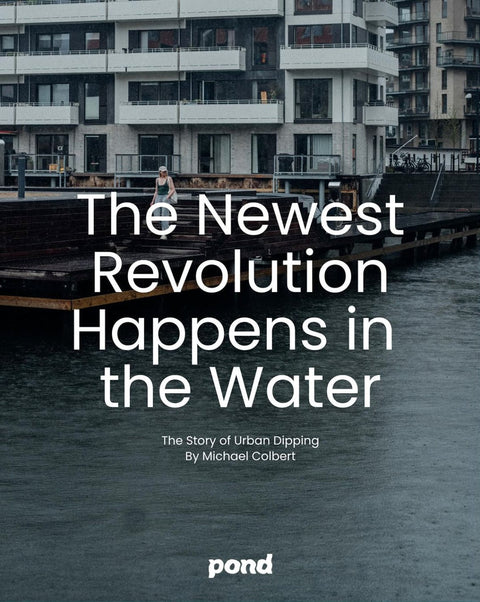Impact
(Over)consumption and waste are the biggest threats to our oceans and rivers. To the whole planet, infact. According to this book (which you really should read), 71% of greenhouse gas emissions from the fashion industry comes from the manufacturing of new clothes.
Which is why we would all be better off by buying less, and keeping our items for longer. That's why we aim to design swim essentials that will last you more than a season. Preferably many, actually. So we URGE you to think twice before buying: Are you ready to take on the responsibility of caring for your new swim essentials to maximize their lifetime, and wear them out over the years to come?
We acknowledge that being a 100% sustainable fashion brand is impossible. That is, of course, a dilemma. Is the solution to stop producing and close business? We don't think so. The fashion industry is a gigantic (impossible?) ship to turn. And being a very small player does not leave us much influence. However, that is not an excuse for not trying.
Here is what we are currently doing to lower our overall impact.
By only producing each new drop in small quantities, we minimize the risk of over-production. Small batches means only buying the exact amount of fabric and trim (all the small parts, elastics, etc.) needed, again avoiding excess stock. Traditionally, dead-stock is discarded and burned by Big Fashion. We prefer to sell out, and live with out-of-stock from time to time.
We only introduce items made with lower impact materials e.g. recycled or upcycled fibers and/or organic fibers.
Recycled? What exactly does that mean? Ok, now. This is going to get a little complicated. Hang in there.
So, fabrics are made from fibres. In our case, synthetic fibres derived from, yes, oil. To minimize the need for new oil, we have chosen a fabric made with recycled fibres. This is good.
However, it turns out that ‘recycled fabrics’ are seldom made from 100% recycled fibres. Here is the breakdown for the fabric used for our swim briefs:
Final fabric mix:
80% polyester fibres
20% elastane fibres
The polyester fibres mix:
50% Q-NOVA® fibres
50% virgin fibres
The Q-NOVA® fibres mix:
Made from at least 50% recycled scraps from virgin nylon production
In the end, a pair of Pond swim briefs contain approx. 20% recycled fibres.
Is this good enough? No. But it was the best option available to us at the time. When you’re shopping next time, keep a lookout for claims such as ‘made from recycled fabric’. You’ll be surprised that often times it’s not (fully).
Still, producing Q-NOVA® fibres (which is done by Italian manufacturer Fulgar) emits 45% fewer carbon emissions and uses 39% less water than producing virgin nylon fibres.
And Q-NOVA® fibres have any nylon's lowest environmental impact, certified by European LCA ISO 14040 and ISO 14044, EU Ecolabel and Global Recycling Standard. This also means something.
The Q-NOVA® fibres are knit with regular elastane fibres and dyed without using toxins by our Spanish fabric manufacturer, Oktex.
The final fabric holds OEKO-TEX 100 and Global Recycling Standard certifications.
Most (cheap) swimwear is made in China. That is not necessarily a bad thing, but we prefer to keep things closer to heart.
By only utilize local/regional production contractors (preferably in the EU) with clearly formulated environmental and social policies
By primarily using local/regional production contractors (preferably in the EU) with clearly formulated environmental and social policies , we cut down on transportation and are certain that our partners live up to EU’s social, working and environmental regulations.
Here is our full supply chain behind your new swim briefs:
Q-NOVA recycled fibres: Fulgar (Italy)
Final fabric: Oktex (Spain)
Drawstring: Paracord (US)
Cord stopper: 2M Italia (Italia)
Cut & Sew: Ecovest (Portugal)
Plastic in clothes packaging is bad for the environment, so we simply don't use it. Instead, we use easily recycleable bags, stickers and mailers made from paper. The ink used for printing is non-toxic and does not hinder the recycling of the packaging materials.
We don’t wrap your swimmers in poly bags, or any other unneccesary packaging, to keep freight weight and the use of materials as low as possible.
PLEASE make sure you recycle all of the packaging properly. That’s on you.
Clean harbours and oceans are not only essential for safe swimming. They are simply the foundation for the planet's health. Plastic waste and general pollution is a huge problem, and only very few harbours are clean enough for urban dipping.
Inspired by the Patagonia-backed NGO '1% for the Planet', we donate at least 1% of our annual turnover (not just our profit) to NGO projects working towards a cleaner environtment.
Each year the Copenhagen Dip Club community decides where we throw our coins, so join our newsletter and have your say in who gets the donations.
In 2021 we donated towards the International Red Cross to help the victims of the Ukraine crisis.
We're not perfect. We know. And there is so much more we dream of doing, in order to cut down on our overall environtmental impact. Here is our current wish list:
We want to know the impact baseline of each item we produce. In order to lower the impact, and to make our customers aware of how much a purchase ‘costs’ in terms of greenhouse gas emissions.
The internal elastics, cord stopper and drawstring used on our swim briefs are not made from recycled materials. We have not been able to source this in the small quantities we require. We continue the search for recycled alternatives for upcoming production batches.
Can you make new swimwear from old? Or make limited drops from dead-stock fabrics? This is a path we want to explore in order to avoid purchasing new fabrics (despite partly from recycled fibres).
Some fibre and fabric producers are researching heavily in bio-polymers, substituting nylon fibres made from crude oil with fibres made from organic materials. We would be over-excited to be able to make swimwear from biomaterials, to avoid the use of oil and to avoid the fabric to shed micro particles when used or washed.
What happens when your swimmers reach the end of their lifecycle? We want to make sure, that old Pond swim briefs and essentials are not discarded and burned with household trash, but send back for recycling.
Today, all our distribution is handled from Denmark. This means lot’s of airfreight to overseas customers. In the future, we want to use local distribution centres to cut down on airfreight and speed up delivery times.
One of the most progressive certifications for committed companies, the B Corp. certification is something we aspire to achieve. It does take a considerable amount of time (and some money) to apply for the certification, so for now we are waiting for our business to stabilize a bit before applying. We want to fully commit, when we commit.
We are in this together. On the one hand, you want stylish, functional and durable swim essentials. And we want to provide those items to you. But, on the other hand, we both know that really, none of us should.
The truth is, there’s no such thing as a truly sustainable anything in this world. We need to want and do less. But better. It is a paradox.
Here are some ideas of what you can do to minimize your impact from buying fashion:
☀︎ Read the book ‘The world is Burning, but we are still buying shoes’ by Alec Leach
☀︎ Think twice before buying: Do you really need a new pair of swimmers?
☀︎ Check out the size guide and ask us if in doubt to avoid returning items
☀︎ Care for your new clothing: No matter what fashion items you buy, take good care of them, get them fixed or repaired and try to prolong their lifetime as much as possible
☀︎ Be an alert shopper and try to avoid all the supposedly ‘green’ or ‘sustainable’ brands
☀︎ Never machine wash (or tumble dry!) your swimmers (rinse in cold water or go for a dip)
☀︎ If washing, use a Gubbyfriend to avoid micro particles getting into our waterways
☀︎ Recycle all you clothing and packaging properly
☀︎ TALK with your friends about how to enjoy buying and owning fashion items with lower impact
Thx, friend, you rock!










